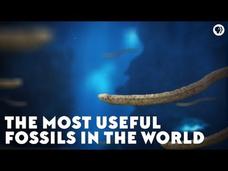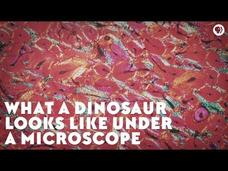PBS
The Haudenosaunee Legendary Founding
While many young historians would say the United States' form of democracy is the longest living, the confederacy established by Hiawatha and the Haudenosaunee is America's precursor. The activity set, complete with a beautifully...
PBS
Inca Origins
Origin stories aren't just for comic books. Learners explore the Inca origin story and compare it to other familiar creation myths with an installment of the Native American Stories series. An easy-to-use lesson plan includes an...
The Great War
Life In The Tomb - WW1 Author Stratis Myrivilis
Most learners likely are not familiar with Statis Myrivilis or his anti-war writings, but his works spur scholars to debate over the role of protest literature in wartime. While the video does situate Myrivilis within the context of the...
The Great War
A Farewell to Arms - Ernest Hemingway
While many can identify Ernest Hemingway's famous works, they may be unaware of his service during World War I and how that affected his literary contributions. An video details Hemingway's service in World War I and explains events and...
PBS
A Gift of Corn to the Choctaw
A mysterious woman. A humble sharing of a meal. A generous gift. The universal value of generosity is threaded throughout a core Choctaw legend on why the tribe began to grow corn. Using part of the Native American Sacred Stories series,...
TED-Ed
Are Naked Mole Rats the Strangest Mammals?
Imagine a mammal with the metabolism of a plant! This strange mammal appears cold-blooded like a reptile and demonstrates the social life of an insect. A short video examines learning the incredible adaptations of the naked mole rat.
Crash Course
History of Media Literacy Part 1: Crash Course Media Literacy #2
Even Plato understood the importance of media! Part of an ongoing series of media literacy videos, the resource takes viewers to where it all began ... ancient Greece. The video covers the emergence of media and the written word, the...
TED-Ed
What Causes Insomnia?
Scientists estimate anywhere from two to thirty percent of the world's population suffers from insomnia at any given time. A short video details the causes of insomnia, what happens to sufferers, and offers some possible solutions.
TED-Ed
How One Scientist Averted a National Health Crisis
Between 1957 and 1962, thousands of infants born in Canada, Great Britain, and Germany had serious deformities due to thalidomide, a drug marketed to pregnant women as a mild sleeping aid and to relieve pregnancy nausea. However, the...
TED-Ed
What Would It Be like to Live on the Moon?
Will the next generation have the option of living on the moon? Discover the challenges and adjustments required to live in such a harsh environment with a short video that describes some of the obstacles scientists must overcome in...
TED-Ed
How Do We Study Living Brains?
Out of all vertebrates, the largest brain when compared to body size belongs to humans. Studying the working brain presents challenges to scientists. Learn about three of the most common tests used to understand how the living brain...
TED-Ed
Why Are Fish Fish-Shaped?
Some species of fish are more closely related to humans than they are to other species of fish! How did so many species, that aren't closely related, develop the same body shape? A short video explains the evolution of fish.
TED-Ed
What Is Dust Made Of?
We find dust almost everywhere, but have you ever considered it fascinating? Dust contains a variety of materials and varies greatly based on location. After learning about dust, scholars answer multiple-choice and short-answer questions.
TED-Ed
What Causes Constipation?
Chronic constipation includes those people with fewer than five bowel movements per week. Understanding the causes of constipation helps determine appropriate treatments. Changes in diet, schedule, stress, and age alter the way our body...
TED-Ed
How to Build a Dark Matter Detector
Scientists measure dark matter based on gravity, but how do we find something that can't be detected by anything on the electromagnetic spectrum? Understanding what doesn't work leads to new tests and machines in the search for dark...
PBS
Seasonal Science: Thundersnow
Let it snow, let it snow, let it ... thundersnow? Explore the thundersnow phenomenon with a video and lesson as part of the Seasonal Science series. The video describes what causes the unique weather event, explains just how rare these...
PBS
The Other Explosion You Should Know About
Scientists replace incorrect ideas when new evidence appears, but what happens when scientists reject the new evidence? Learn the story of the Avalon explosion and the scientists who resisted the fossils proving it existed as one part of...
PBS
How the Turtle Got Its Shell
Does a shell define a turtle, or are there turtles without shells? Learn about the evolution of the unique reptile and the mystery that surrounds this identifiable feature as part of a larger series of videos. As various disciplines...
PBS
The Most Useful Fossils in the World
One of the most abundant fossils on earth confused paleontologists for more than one hundred years. Viewers learn about the mystery and discoveries related to conodonts in a video from PBS as part of its Eons series.
PBS
What a Dinosaur Looks like under a Microscope
How do scientists determine the age of a dinosaur when it died? Viewers earn how scientists make slides of dinosaur fossils and how they use these images to determine age at death. Part of a larger Eons series from PBS, these beautiful...
PBS
Inside the Dinosaur Library
Where do fossils that aren't on display in a museum go? Learn about the dinosaur collections at the Museum of the Rockies as part of the larger PBS Eons series of videos. The collections manager explains how they care for fossils and...
PBS
What Was the Ancestor of Everything?
As part of evolution species branch off of others species. But what did the original limb look like? Young scientists discover the exciting study of the last universal common ancestor as they hear from specialists in multiple scientific...
PBS
How the Squid Lost Its Shell
The ancestors of squid and octopus used shells as a form of defense. Pupils learn how cephalopods evolved without shells and the adaptations required to survive without one. Viewers learn how scientists know about these changes and the...
PBS
How the Chalicothere Split In Two
How is it that the same animal, living in the same place, at the same time, evolved into two different species? As part of a larger series, an engaging video explains the rise of the chalicothere, the split in evolution, and eventually...

























